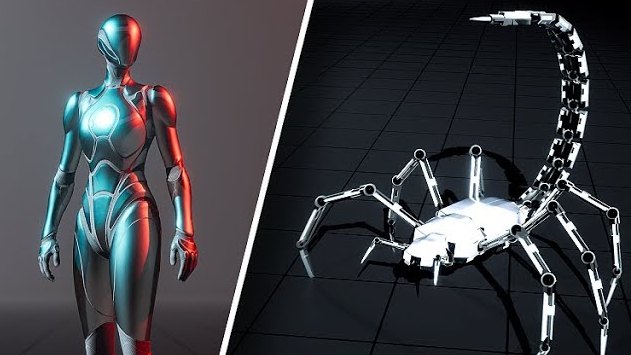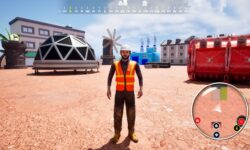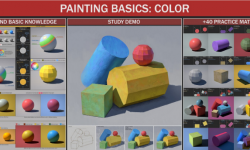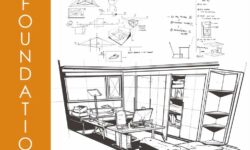Release date:2024, March
Duration:07 h 15 m
Author:Lincoln Margison
Skill level:Beginner
Language:English
Exercise files:Yes
This course is tailored for game developers, starting with detailed explanations and instructions to guide you through creating procedural animation systems using Control Rig. You’ll gradually explore various features of Control Rig while creating a procedural walk system and experimenting with character interaction and realistic movement within the environment.
Next, we’ll delve into creating a procedural turn-in-place animation system, covering troubleshooting, tweaking, and step-by-step logic development. The project file includes completed versions of all creations for Unreal Engine 5.2 and 5.3, with updates planned for version 5.4 upon release.
The techniques covered are applicable to both single-player and multiplayer projects, as well as UEFN (Unreal Engine for Networking). While animBP access is currently unavailable in UEFN, preventing combination with keyframed animation, the majority of concepts explored within Control Rig remain applicable.
This course offers exclusive insights and knowledge derived from years of experimentation with Control Rig and procedural animation systems. My aim was to distill this experience into an easily comprehensible course, providing explanations and diagrams at every step to help you master Control Rig for your own procedural and dynamic animations.
I eagerly anticipate your participation in the course and encourage you to share your creations and ideas. I’m available for discussions on concepts, ideas, or assistance with any project, even if your specific use-case isn’t directly covered in this course.
Watch online or Download for Free
[Udemy] Control Rig for Unreal Engine 5 by Lincoln Margison
1. Introduction
01. Introduction and overview
02. Basic tips & troubleshooting
2. Creating a Procedural Walk Cycle
01. Initial Character Blueprint setup
02. Initial Animation Blueprint setup
03. Creating the ControlRig class
04. Make ControlRig DO something
05. Create an array of FootNames
06. WorldSpace vs RigSpace explanation
07. Save the default foot transforms to a new array
08. Visualize the foot transforms with DrawTransform
09. FullBodyIK node explanation
10. Add one leg into the solver
11. Add the rest of the legs into the solver
12. SAVE FIRST! Collapse to a function
13. Convert World transform to Rigspace transforms into the solver
14. Explanation of how we will calculate the velocity
15. Create the CalculateVelocity function
16. Calculate how far the character has moved in the world
17. Calculate how far the character moves per second and draw it
18. Smooth the calculated velocity
19. Add comments to the calculate velocity function
20. Cycle explanation
21. Creating the CalculateCycle function
22. Test our cycle with a print node
23. Creating the MoveFeetTransforms function
24. Creating a FootLocked array of booleans
25. Is the foot locked or unlocked logic
26. Create the Swing Percent and unlock condition
27. Unlocked logic and lock condition
28. Include and test the MoveFeetTransforms function
29. Making the unlocked foot snap back to the default pose position
30. Creating the foot timing offset array
31. Creating the PerFootCycle array
32. Using the PerFootCycle instead of Master Cycle
33. A basic interpolation for the swing phase
34. Creating the foot prediction function
35. Projecting the landing spot forward in the direction of velocity
36. Scale the prediction time based on how long until the foot lands
37. Change cycle speed based on the characters movement speed
38. Creating the stride length variable, and calculating the cycle time in seconds
39. Save the foot lift-off spot to a WorldLockedFootTransforms array
40. Accurate interpolation between the lift-off to the landing spot, based on cycle
41. Make the legs lift in an arc using a custom curve
42. Make the lift height based on the movement speed
43. Overview of the plan for foot traces
44. A basic trace for every landing spot
45. Random body motions and general improvements
46. More advanced traces explanation and testing on a landscape
47. Implementing more advanced traces
3. Porting control rig to another character
01. Porting the procedural animation system to another character
02. Changing variables for the new character
4. Various ControlRig features and tips for procedural animation
01. Using controls to move the character
02. FullBodyIK settings, and interpolating control targets
03. Value Over Time to delay movements
04. BasicIK node instead of FullBodyIK, when, where, how
05. Finding the Primary and Secondary axis
06. Automatically compute the pole vector
07. Make a bone point in a specific direction
08. Aim more bones at a target with various weighting and interpolation settings
09. Randomize the target point
10. Simulate character breathing with chest scale
11. Combine with an idle animation and create a character class
12. Make the character target a position in the actual game level
13. Creating functions that can be used in any other ControlRig
14. Create the RotateAroundPoint function, to rotate in RigSpace
15. Incorporate the translation change when rotating around a point
16. Create a function to rotate a single bone in place, in RigSpace
5. Turn-in-place animation system
01. The challenge, the goal, and the starting point
02. Saving the accumulated rotation
03. Negate any rotation of the character to keep the same world rotation
04. Make the spine always look in the correct direction
05. Adding the solver and starting a rotation timer
06. Compensate for pieces of the total rotation offset
07. Applying the calculations to see the result on the character
08. Offset the rotation timing of each foot
09. Searching for issues and the next steps to improve
10. Problem solving
11. Weight shift towards the grounded leg
12. Make the movement more natural and bouncy
13. Bug fixing, finalizing, and looking to the future
[Udemy] Control Rig for Unreal Engine 5 by Lincoln Margison_Subtitles.7z
[Udemy] Control Rig for Unreal Engine 5 by Lincoln Margison.7z.rar
Join us on
 Channel and
Channel and  Group
Group





 Channel
Channel





